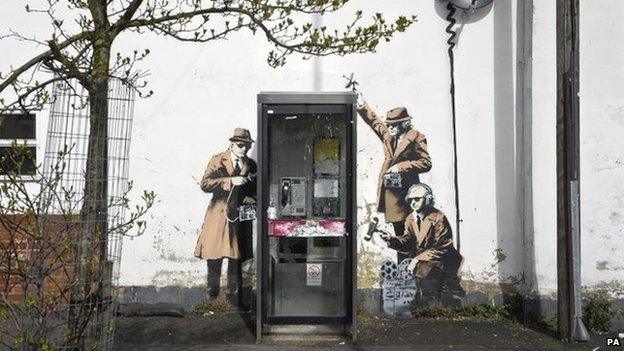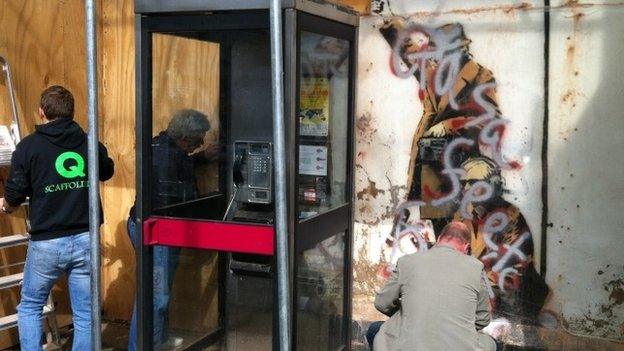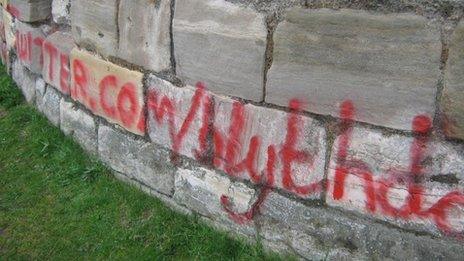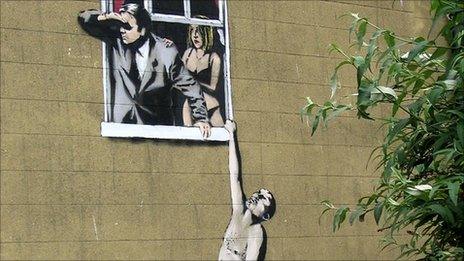Can a Banksy get legal protection?
- Published

The Banksy artwork appeared in Cheltenham in April 2014
Council planners are meeting to decide whether to protect a Banksy on the side of a house in Cheltenham. But should a piece of vandalism be protected by law?
The work of art, known as Spy Booth, appeared on the side of a Grade II listed Georgian terraced house last April.
Locals have campaigned to save the piece, after it was vandalised, and a London art dealer and the building's owner announced they wanted to remove it and sell it.
But it could now be protected if council planners grant retrospective listed building consent for alterations to the building. It would mean further permission would be needed should any alterations be proposed, or if somebody wanted to remove it.
So can, and should, an act of vandalism be protected? Actually it's not as unusual as you might think.
According to English Heritage, graffiti has never been given listed protection in its own right, although it can be found on buildings which have been designated for other reasons.
"Some of this is historic in its nature, such as that found at Carlisle Castle," said spokeswoman Debbie Hickman.

Graffiti at Carlisle Castle is believed to date back to the 15th Century
The graffiti in question can be found in the castle's keep. It features finely carved pictures and symbols and dates to about 1480.
Some buildings with exceptional artwork are listed, but generally these feature artwork which was part of the original design, such as the mural at the Three Tuns pub in Coventry, which was created in 1966.
"Very exceptionally things which are less than 30 years old can be listed, but only if they are of the highest significance and would be listed at Grade II* or I.
"There doesn't appear to be any recent examples of this," said Ms Hickman.
John Webster, who is a solicitor specialising in planning law, said the idea of granting retrospective planning consent for the Cheltenham Banksy was "quite intriguing".
"You've got something that is already listed and it has got graffiti on it. Five or 10 years ago it would have been painted over or cleaned off," he says.
"They're being quite innovative in putting this application forward and by asking to amend the listing description to include the Banksy.

The Cheltenham Banksy was covered in graffiti last August and was then boarded up to prevent further damage
"To say this is an authorised alteration made to a listed building that we now want to keep, I think legally it's very clever."
Mr Webster said the next step would be the most difficult one.
"I'd imagine that they would receive consent but then have to board the artwork back up again until they come up with a solution to preserve it.
"Do you put glass up around it? Do you build some sort of conservatory around it?"
He said people had put up transparent coverings over Banksys to try to protect them, but it had not always been successful.
"There's an example in Melbourne in Australia, but someone poured paint between the gaps between the wall and the plastic.
"These things can encourage an adverse reaction if you're not careful, which should be borne in mind by those trying to preserve them."
- Published12 February 2015

- Published19 March 2012

- Published22 August 2011
